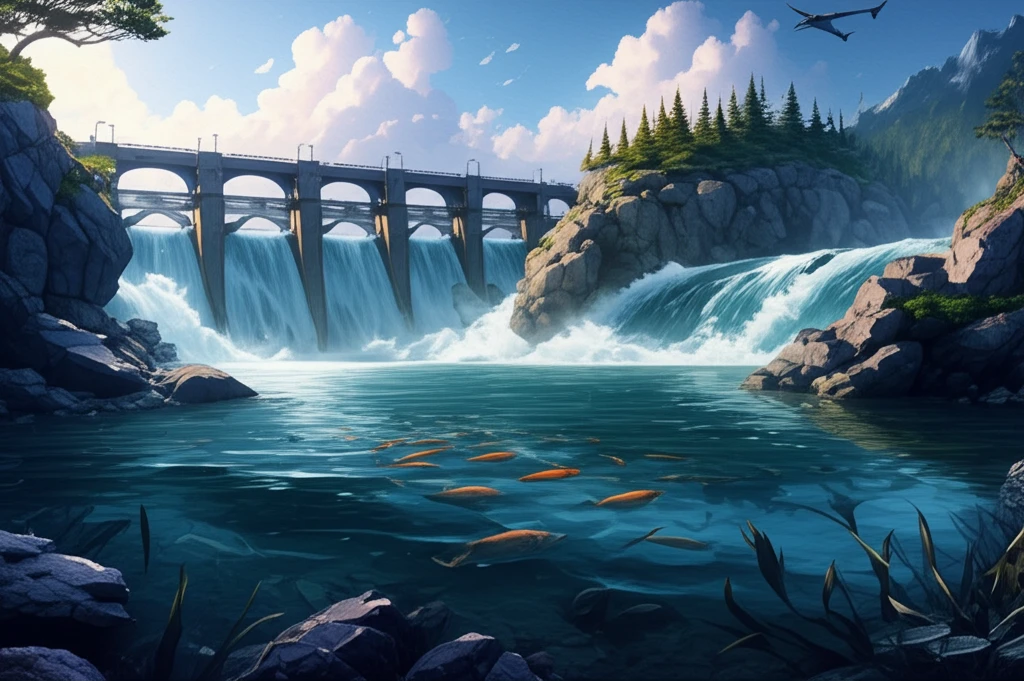
When Dams Don't Deliver: The Hidden Crisis of Fish Passage Systems
"How ecohydraulic oversights are impacting fish populations in irrigation systems—and what we can do about it."
Dams are vital components of water management infrastructure worldwide, providing essential water supply for agriculture, industry, and domestic use. However, their construction often comes at a significant environmental cost, particularly concerning the disruption of natural river ecosystems. One of the most critical impacts is the obstruction of fish migration routes, which can lead to decreased biodiversity, reduced fish populations, and economic losses for communities dependent on fisheries.
In South America, the construction of dams has increased to meet growing water demands. While these projects aim to enhance water security, they frequently lack adequate consideration for fish passage. The consequences are far-reaching, affecting not only fish species but also the overall health and resilience of river systems. A recent study focusing on the Route 28 Dam in the Pilcomayo River basin sheds light on the challenges of designing effective fish passage systems in the region.
The Route 28 Dam, located in Formosa Province, Argentina, exemplifies the complexities of balancing water resource management and ecological preservation. Built to ensure year-round road crossing and provide water for irrigation, the dam has the potential to block fish movements between the La Estrella marsh and the Pilcomayo River. This obstruction can strand fish downstream, leading to high mortality rates during low water periods. The central question is whether the existing fish passage systems, specifically pool and weir ladders, are effective for key migratory species like the sábalo (Prochilodus lineatus).
The Engineering vs. Ecology Mismatch

The study's findings reveal a significant mismatch between engineering designs and the ecohydraulic requirements of local fish species. The Route 28 Dam's spillway, designed to release excess water, poses a considerable barrier to fish attempting to migrate upstream. The research indicated that only fish longer than 39 cm could potentially ascend the spillway chute, and even then, only when water levels on the spillway crest exceed 0.4 meters. This limitation excludes a significant portion of the sábalo population, which typically ranges from 26 to 45 cm.
- Spillway design restricts passage to larger fish during high water levels.
- Inadequate dissipation pool depth prevents effective leaping.
- Fish ladders suffer from design flaws, limiting their effectiveness.
- Attraction flows are insufficient to guide fish to ladder entrances.
Rethinking Dam Design: A Call for Ecohydraulic Integration
The failures observed at the Route 28 Dam highlight the urgent need to move beyond "salmon-centric" designs and embrace ecohydraulic principles tailored to the unique characteristics of neotropical fish species and their environments. Future dam projects must consider the hydrological variability and bioecological factors specific to pulsatile systems like La Estrella marsh. This requires a holistic approach that integrates engineering, ecology, and local knowledge to create effective and sustainable solutions.
